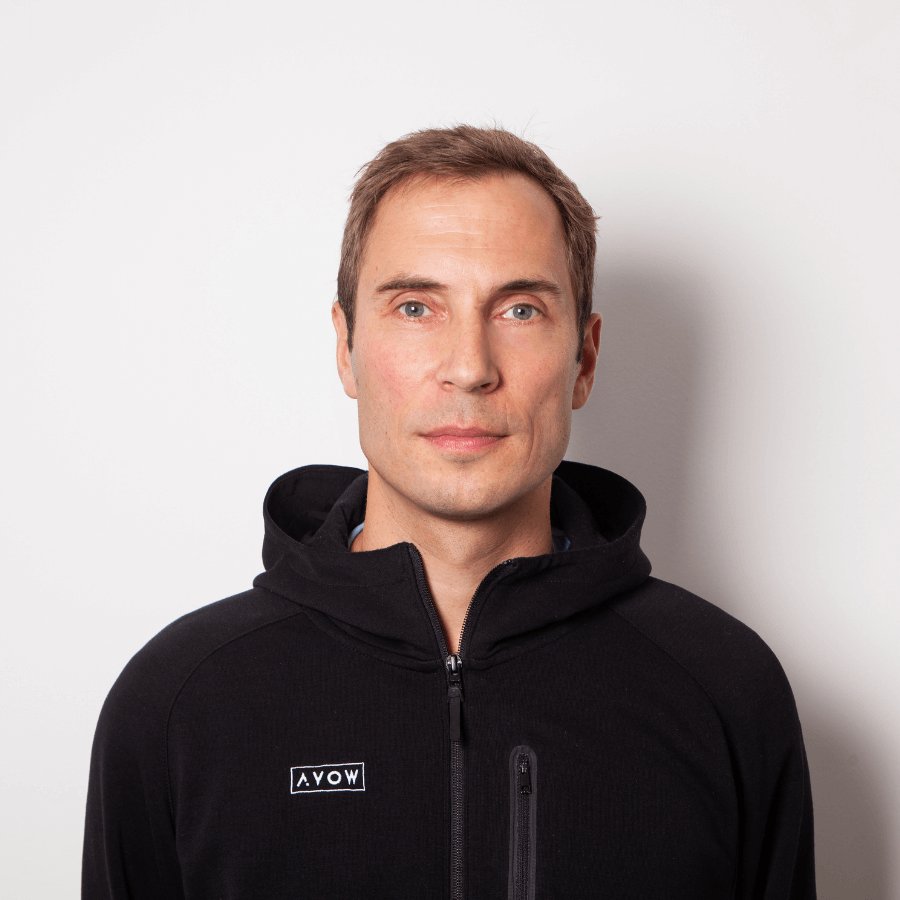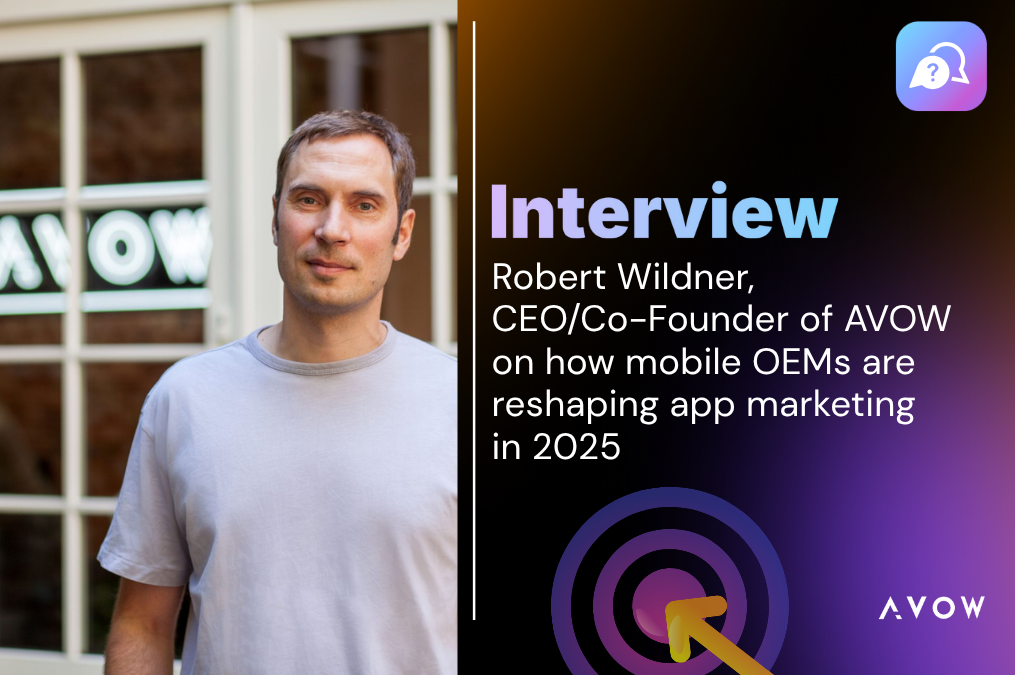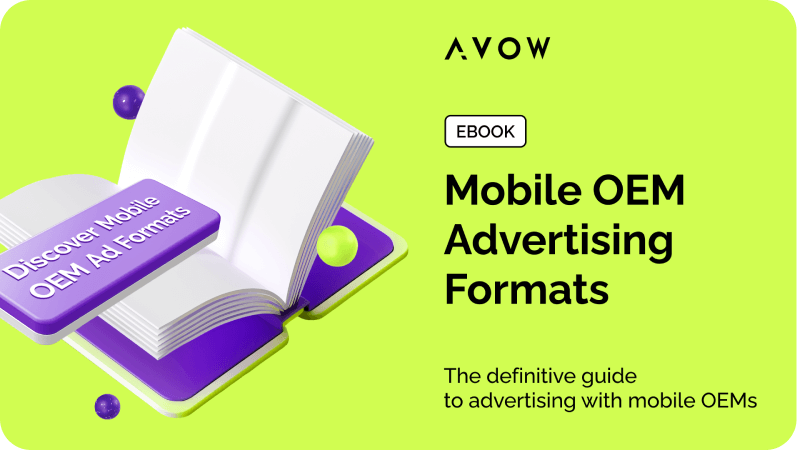This interview with AVOW CEO Robert Wildner originally appeared in German in ADZINE, a leading German trade publication covering digital marketing, ad tech, and programmatic advertising. It has been translated and adapted for our blog.
App marketing in 2025 is being redefined by the rise of alternative app stores and changing privacy regulations. In the conversation, Robert shares how AVOW is helping advertisers tap into the massive reach of alternative app stores – like Samsung’s Galaxy Store, Huawei’s AppGallery, and Xiaomi’s GetApps – by partnering directly with mobile OEMs. He explains why mobile OEM platforms are a powerful, privacy-compliant alternative to traditional app stores, how recent EU regulations like the Digital Markets Act are accelerating their adoption, and what this shift means for marketers in Germany and beyond.
Interview with AVOW CEO & Co-Founder Robert Wildner: Why OEMs Matter for App Marketing in 2025
ADZINE: You specialize in user acquisition in alternative app stores. In this context, original equipment manufacturers (OEMs) are particularly important. Would you like to start by giving us a brief definition of OEMs?
Robert Wildner: When we talk about Original Equipment Manufacturers or mobile OEMs, we’re basically referring to companies that make devices like smartphones and tablets. Think of big names like Samsung, Xiaomi, Huawei, Vivo, OPPO, and others. These brands create high-quality hardware and also develop robust app ecosystems and platforms that offer significant growth potential. Alternative app stores, such as Samsung’s Galaxy Store and Huawei’s AppGallery, provide ways to reach audiences that may be less accessible through traditional channels.
Mobile OEMs vs. Traditional Platforms
ADZINE: What do OEMs have to offer advertisers that the Googles and Apples of this world can’t?
Robert Wildner: Mobile OEMs provide opportunities that mainstream platforms like Google and Apple simply can’t match. For example, AVOW’s integrated OEM partners cover 86% of the global Android market and provide access to 1.5 billion daily active users. These users are often more brand-loyal, which leads to higher engagement and less competition for ad space – translating into better performance and more efficient user acquisition.
Another major advantage is precision targeting. OEMs have access to device-level data, enabling advertisers to reach users based on device type, usage behavior, and preferences—while still respecting user privacy. It’s also more cost-effective, with fewer intermediaries and less competition.
Mobile OEM platforms are inherently brand-safe and fraud-free. They’re also integrated with mobile measurement partners, which means campaigns are data-backed and can evolve in real time. Despite some hesitation from developers, OEM platforms allow full control over monetization and payments. It’s a highly scalable and secure channel that plays a growing role in app marketing in 2025.
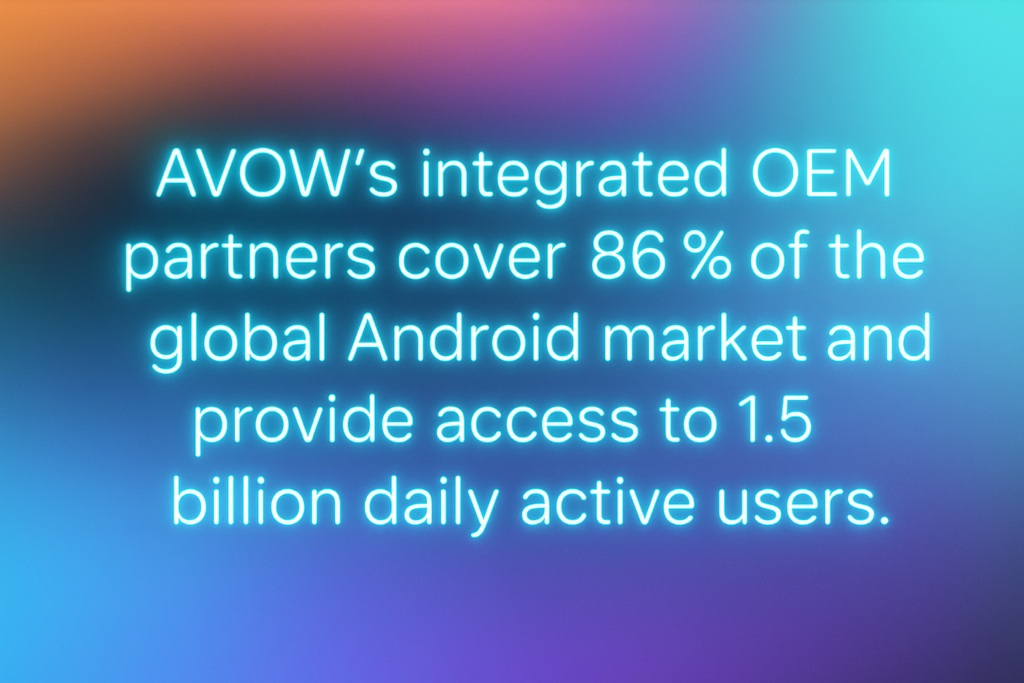
Technical Integration with OEM Alternative App Stores
ADZINE: How are you technically integrated into the stores?
Robert Wildner: We work directly with mobile OEMs and access their ad inventory via API integrations. This lets us manage placements efficiently and collect real-time campaign performance data. Our in-house tech further optimizes placements and improves performance insights – making the experience seamless for both advertisers and OEMs.
AVOW and Samsung’s Galaxy Store Partnership
ADZINE: You are now one of the marketing partners of the Samsung Galaxy Store in Europe.
Robert Wildner: Yes, and it’s an exciting milestone for us at AVOW. As Samsung’s key advertising partner in Europe, we manage inventory sales across the Galaxy Store in the EU—giving developers and brands direct access to Samsung’s large user base.
Samsung started the year with a 37% market share in Europe, the largest among smartphone vendors. In Q1 alone, they shipped 12.1 million units – including 4.3 million Galaxy S24 devices launched that quarter. It’s a major opportunity for advertisers to reach a broad and diverse audience.
A Milestone for a Young Berlin Compan
ADZINE: Does that count as an accolade for you as a relatively young Berlin company?
Robert Wildner: Absolutely! Partnering with Samsung is a big achievement for us as a company founded in 2018. While we’re young, the ecosystem of alternative app stores is also relatively new – and we’ve been part of this movement from the beginning.
We now partner with 11 key OEMs, including Xiaomi, Vivo, OPPO, Huawei, and more. Being recognized by global leaders like Samsung validates our efforts and motivates us to keep delivering value to our clients and the broader mobile ecosystem.
The State of Alternative App Stores in Germany
ADZINE: How relevant are alternative app stores in Germany anyway?
Robert Wildner: Alternative app stores have gained more relevance recently, especially after the EU’s Digital Markets Act (DMA) came into force. It requires Google to open its ecosystem and end discriminatory practices that prevented installs outside of Google Play.
For developers running user acquisition campaigns, the number of daily users in a store is less important than how many devices that OEM has shipped. Most user traffic doesn’t even come from the store interface – it comes from embedded ad placements on the device (like the -1 screen) or in OEM apps (like Xiaomi Browser).
As of September 2024, Samsung leads the German market with a 35% share, ahead of Apple. Xiaomi, Huawei, and OPPO also outperform Google’s own devices. As privacy awareness grows, users are increasingly exploring OEM-based alternatives for a more curated and integrated experience.
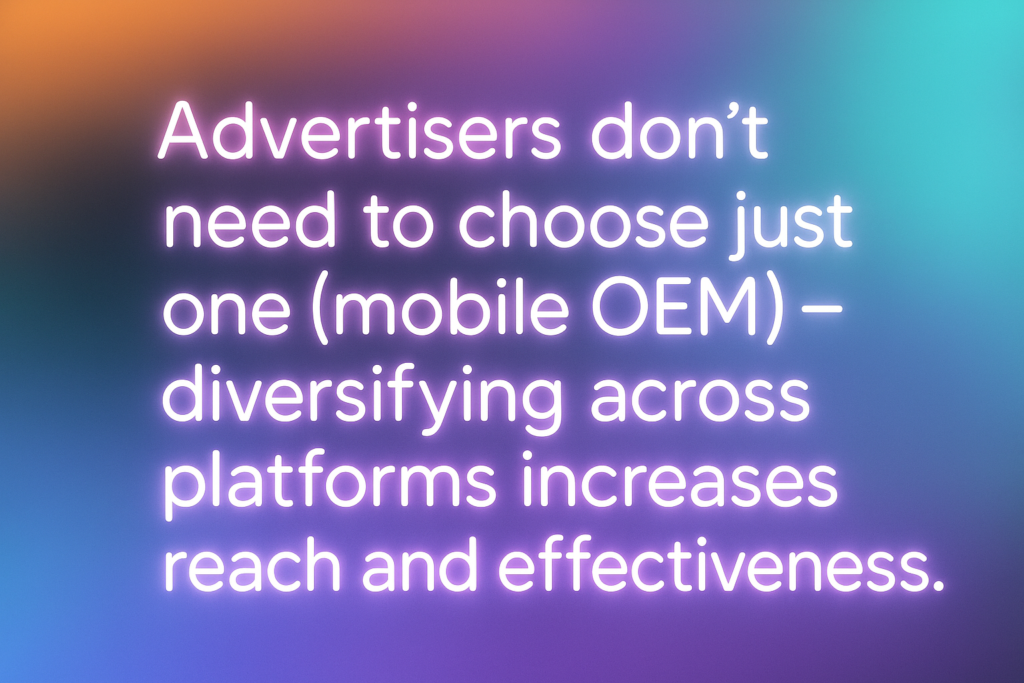
App Marketing in 2025: Other App Stores to Watch
ADZINE: For app marketing in 2025, which stores should German advertisers have on their radar apart from Samsung?
Robert Wildner: Besides Samsung’s Galaxy Store, German advertisers should pay attention to Xiaomi’s GetApps and Huawei’s AppGallery. But we’re also watching emerging players like the EPIC Store, OneStore, and Uptodown. Advertisers don’t need to choose just one—diversifying across platforms increases reach and effectiveness.
Targeting Capabilities in OEM Stores
ADZINE: What data do you use in the stores for targeting?
Robert Wildner: We use a combination of device-level data—like type, model, and OS version—and user behavior, such as app usage patterns and browsing history. Where available, we also use demographic, geographic, and contextual data to refine targeting.
The DMA’s Impact on App Marketing in 2025
ADZINE: The stores of the big players are to be regulated by the Digital Markets Act. To what extent has the DMA affected your business?
Robert Wildner: Ah, one of my favorite topics! I even publish a monthly article series on LinkedIn about the DMA’s implications.
The DMA has significantly impacted our business by opening more doors for alternative app stores. Its goal is to level the playing field and curb monopolistic behavior by Google and Apple. That, in turn, boosts visibility and competitiveness for OEMs.
For AVOW, it means growing demand for OEM ad inventory as advertisers increasingly look beyond traditional app stores. That aligns perfectly with our mission to diversify the mobile advertising ecosystem and offer more choice for developers and consumers.
Looking Ahead: OEMs and the Future of Growth
ADZINE: In April, a mobile expert described its impact to me as “a drop in the ocean.” Has that changed in the meantime?
Robert Wildner: Initially, some saw the DMA’s impact as minor, but I’d challenge that view. Change has come faster than many expected, and perspectives are shifting.
The DMA has created foundational changes – like enabling alternative app stores to operate on Android and iOS. That’s huge. As enforcement continues, we expect even more growth and opportunities for OEM platforms. This momentum is shaping app marketing in 2025, as advertisers seek more open and diversified distribution strategies
Ultimately, this isn’t just about limiting the dominance of major players. It’s about enabling diversity, choice, and a healthier ecosystem for both developers and users.
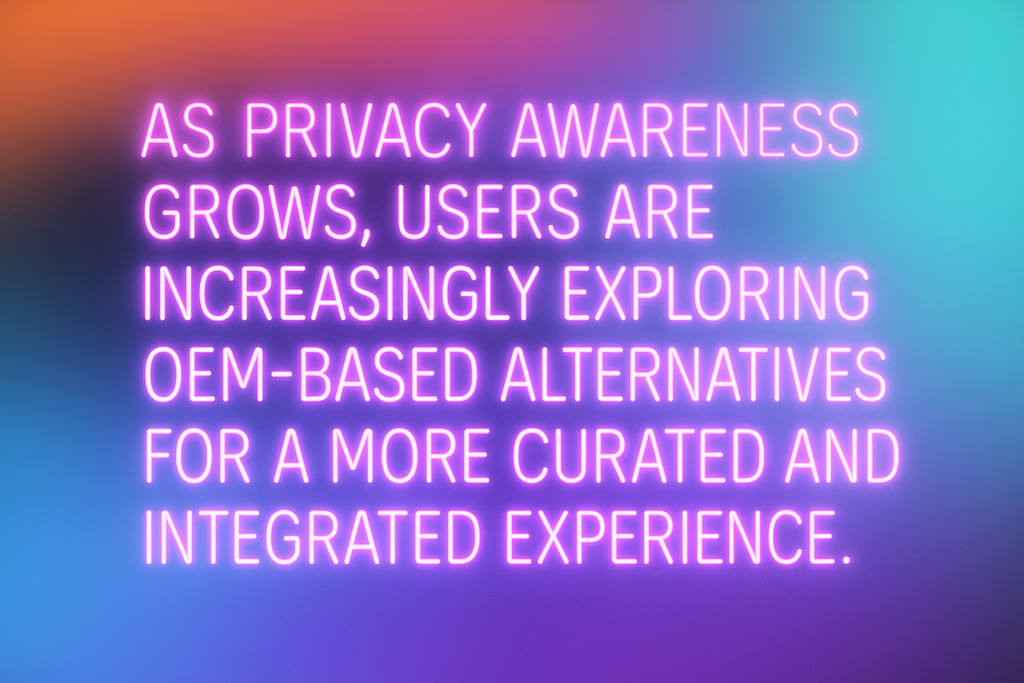
What App Marketing in 2025 Looks Like
App marketing is breaking free from the duopoly. In 2025, advertisers are no longer content with being confined to the ecosystems of Google and Apple. AVOW, led by Robert Wildner, is driving this shift by unlocking high-performing, privacy-friendly user acquisition through mobile OEM partnerships and alternative app stores.
As regulations tighten and user behavior evolves, marketers are searching for scalable, transparent, and ROI-positive solutions. AVOW is not just adapting to this new reality — it’s helping define it.
Learn more about mobile OEM advertising with AVOW at www.avow.tech.
About the Author
About the Author
